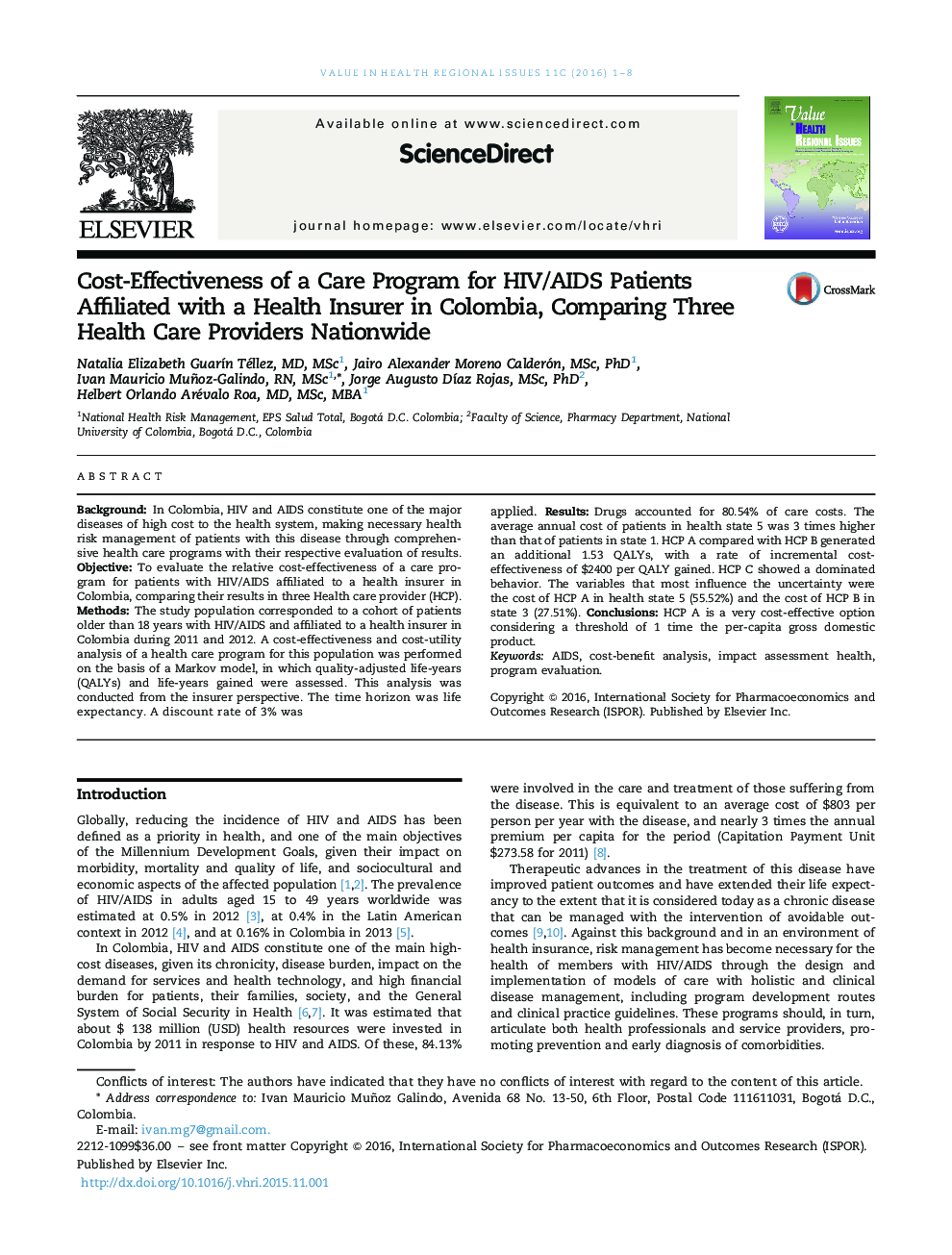| Article ID | Journal | Published Year | Pages | File Type |
|---|---|---|---|---|
| 989957 | Value in Health Regional Issues | 2016 | 8 Pages |
BackgroundIn Colombia, HIV and AIDS constitute one of the major diseases of high cost to the health system, making necessary health risk management of patients with this disease through comprehensive health care programs with their respective evaluation of results.ObjectiveTo evaluate the relative cost-effectiveness of a care program for patients with HIV/AIDS affiliated to a health insurer in Colombia, comparing their results in three Health care provider (HCP).MethodsThe study population corresponded to a cohort of patients older than 18 years with HIV/AIDS and affiliated to a health insurer in Colombia during 2011 and 2012. A cost-effectiveness and cost-utility analysis of a health care program for this population was performed on the basis of a Markov model, in which quality-adjusted life-years (QALYs) and life-years gained were assessed. This analysis was conducted from the insurer perspective. The time horizon was life expectancy. A discount rate of 3% was applied.ResultsDrugs accounted for 80.54% of care costs. The average annual cost of patients in health state 5 was 3 times higher than that of patients in state 1. HCP A compared with HCP B generated an additional 1.53 QALYs, with a rate of incremental cost-effectiveness of $2400 per QALY gained. HCP C showed a dominated behavior. The variables that most influence the uncertainty were the cost of HCP A in health state 5 (55.52%) and the cost of HCP B in state 3 (27.51%).ConclusionsHCP A is a very cost-effective option considering a threshold of 1 time the per-capita gross domestic product.
